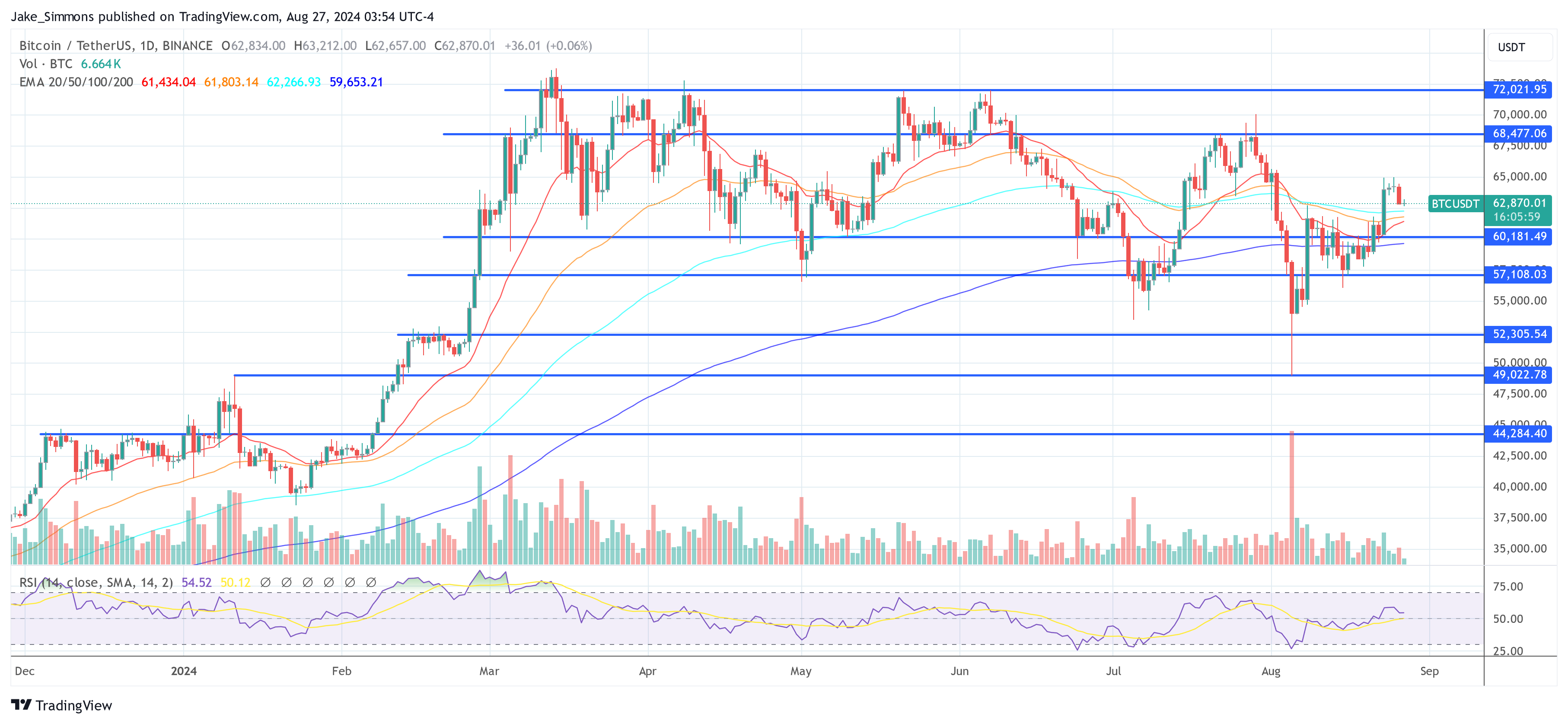In a recent episode of the What Bitcoin Did Podcast, Peter McCormack hosted Jack Mallers, CEO of Strike, who made a bold prediction about the future price of Bitcoin. Mallers suggested that BTC could potentially reach a valuation ranging from $250,000 to $1 million within the current economic cycle. His prediction was based on a deep analysis of global economic trends and central bank policies, highlighting the unique challenges and opportunities present in today’s financial landscape.
Reasons Behind Bitcoin’s Potential Surge to $1 Million
Mallers drew attention to the soaring global debt-to-GDP ratio, which has surpassed 300%, as a key indicator of economic imbalance. He explained, “Global debt reflects the amount of time and energy borrowed from the human population and its future.” According to Mallers, this disproportionate ratio signifies that governments are excessively borrowing resources from the future without a viable plan for repayment. This unsustainable practice essentially robs future generations of their potential quality of life and economic freedom.
Mallers expressed concerns about the potential repercussions of this economic imbalance, particularly as governments struggle to manage their debts without resorting to measures like currency devaluation. He warned that currency debasement, the devaluation of money due to an increase in the money supply, may be a likely consequence of unsustainable debt levels, ultimately leading to wealth erosion and savings devaluation for individuals.
“Speculations suggest that currency debasement could be the government’s way out, essentially stealing the time and energy of every individual,” Mallers stated.
Within this context, Mallers positioned Bitcoin as a valuable tool for achieving financial independence. By converting their assets into Bitcoin, individuals can shield themselves from their government’s economic mismanagement and safeguard their wealth against inflation and currency devaluation. He emphasized that Bitcoin’s fixed supply of 21 million coins makes it immune to the inflationary tactics that governments may employ, unlike fiat currencies that can be printed limitlessly.
Central Banks and the Path to a $1 Million Bitcoin
Mallers was critical of central banks’ interventions in economic cycles, which he believed hinder necessary adjustments and the removal of inefficiencies crucial for healthy economic dynamics. He argued that these interventions artificially stabilize markets, making them fundamentally vulnerable in the long run.
He predicted, “I have been on record stating that Bitcoin will reach $250,000 to $1 million long before any rumors, solely based on the fact that we are likely to witness the greatest asset bull market in history. Why? Because central banks have continuously fixed prices whenever there are disruptions. They disrupt the business cycle instead of letting it run its course.”
Mallers particularly highlighted the bond market as a key area where central banks’ influence is less pronounced compared to real estate and equities. The bond market plays a critical role in the global financial system and government fiscal management strategies.
He foresaw a scenario where central banks’ attempts to control the bond market might lead to extreme measures such as massive money printing. This, in turn, could trigger unprecedented asset price inflation, surpassing any previous market cycles. Mallers predicted, “Central banks will try to fix prices in the bond market this cycle. The amount of money printing will be astronomical, leading to a surge in asset prices across various sectors. Bitcoin, being a truly fixed asset, will outperform everything by a significant margin.”
As of the latest update, BTC was trading at $62,870.

Image credit: DALL.E, chart courtesy of TradingView.com
following sentence using different words:
Original: The cat sat lazily in the sun, enjoying the warmth on its fur.
Rewritten: The feline lounged leisurely in the sunlight, relishing the heat on its coat.

